Imagine waking up every morning, looking in the mirror, and feeling completely confident about your appearance. For many, the nose is a central feature that can significantly impact self-esteem and even affect daily life.
Whether you’ve always been self-conscious about the shape of your nose, struggle with breathing difficulties, or have suffered an injury that altered your nasal structure, rhinoplasty or a nose job might be the solution you’ve been searching for. But before you take the plunge, you’re probably wondering:
How much is a rhinoplasty?
How much is a good rhinoplasty?
What does the process entail?
And, Is it really worth it?
How much is a rhinoplasty?: In short, a rhinoplasty at our Philadelphia plastic surgery office ranges between $8,800 to $10,400, including plastic surgeon fees, hospital fees, and anesthesia fees.
Below is a break-down of the different types of rhinoplasty and the process.
What is Rhinoplasty?
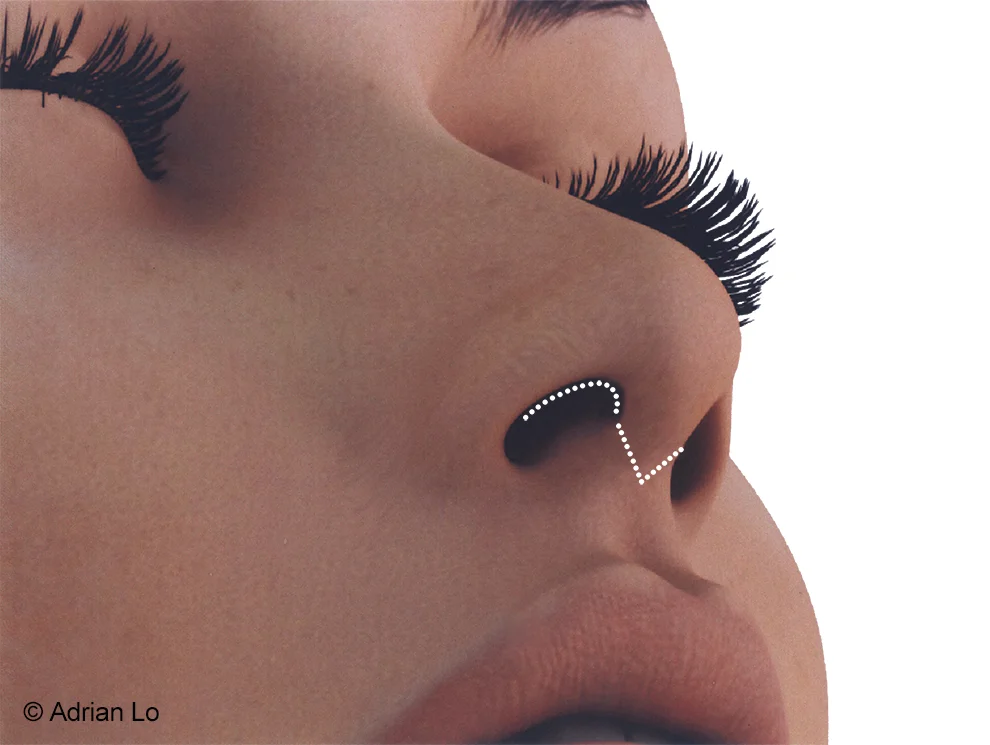
Rhinoplasty, commonly known as a “nose job,” is a surgical procedure that reshapes or resizes the nose. This popular cosmetic surgery can address a wide range of concerns, from aesthetic issues to functional problems that affect breathing.
Rhinoplasty is not just about creating a more visually appealing nose; it’s about harmonizing facial features and, in many cases, improving the quality of life for patients who struggle with nasal obstruction.
Rhinoplasty can address various concerns, including a prominent bump on the bridge of the nose, a drooping or upturned nasal tip, asymmetry, and issues related to previous injuries. For those with breathing difficulties due to structural abnormalities, rhinoplasty can be a life-changing procedure, improving both form and function.
It’s important to note that rhinoplasty is a highly individualized procedure. What works for one patient may not be suitable for another, which is why a thorough consultation with a board-certified plastic surgeon is crucial. During this consultation, the plastic surgeon will assess your nasal structure, discuss your goals, and develop a personalized treatment plan.
Types of Rhinoplasty Procedures
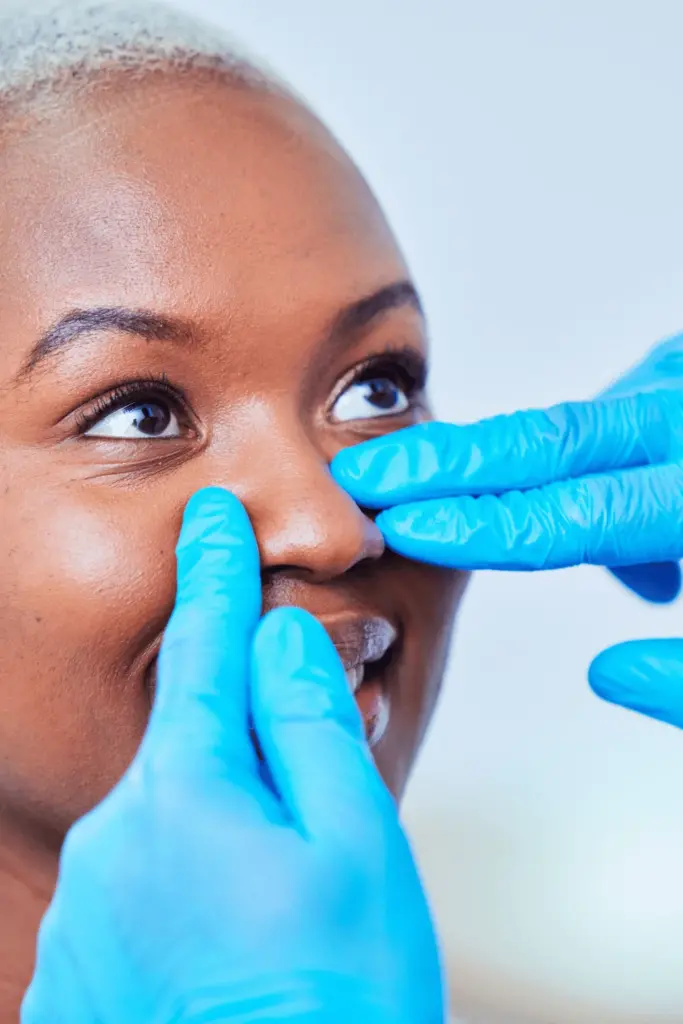
Open Rhinoplasty
Open rhinoplasty is a surgical technique that provides the plastic surgeon with maximum visibility and access to the nasal structures.
In this procedure, a small incision is made across the columella, the strip of tissue that separates the nostrils and the rest of the incisions are inside the nose.. This allows the plastic surgeon to lift the skin off the tip of the nose providing a direct view of the underlying structures.
The main advantage of open rhinoplasty is the increased visibility it offers. This can be particularly beneficial for complex cases or revision surgeries where more extensive work is needed. The plastic surgeon can make more precise adjustments to the nasal structure, which can lead to more predictable and refined results.
However, open rhinoplasty does have some drawbacks. The procedure typically results in more swelling and a longer recovery time compared to closed rhinoplasty. There’s also a small risk of visible scarring on the columella, although this is usually minimal and fades over time.
Despite these potential drawbacks, many plastic surgeons prefer the open technique for its versatility and the level of control it provides. It’s particularly useful for procedures that involve significant changes to the nasal tip or require complex grafting techniques.
Closed Rhinoplasty
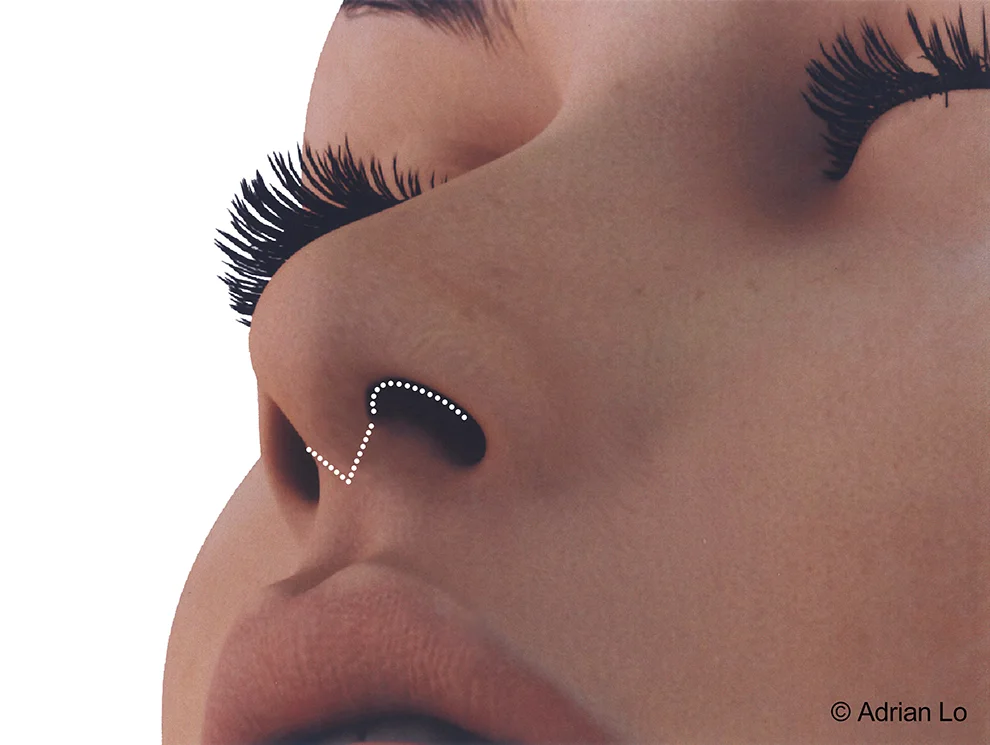
Closed rhinoplasty, also known as endonasal rhinoplasty, is a technique where all incisions are made inside the nostrils. This means there are no visible external scars after the surgery. The plastic surgeon works through these internal incisions to make the necessary changes to the nasal structure.
One of the main advantages of closed rhinoplasty is the reduced recovery time. Because there’s no external incision, there’s typically less swelling and bruising, which means patients can often return to normal activities sooner. The lack of visible scarring is also a significant benefit for patients.
However, closed rhinoplasty does have its limitations. The technique provides less visibility for the plastic surgeon, which can make it more challenging to perform complex alterations, especially to the nasal tip. It’s generally best suited for cases where less extensive changes are needed.
Plastic surgeons who specialize in closed rhinoplasty have developed techniques to overcome some of these limitations, but it still may not be the best choice for every patient. The decision between open and closed rhinoplasty often depends on the specific changes needed to achieve the patient’s goals,, the nasal structure and the surgeon’s expertise and preference.
Septoplasty
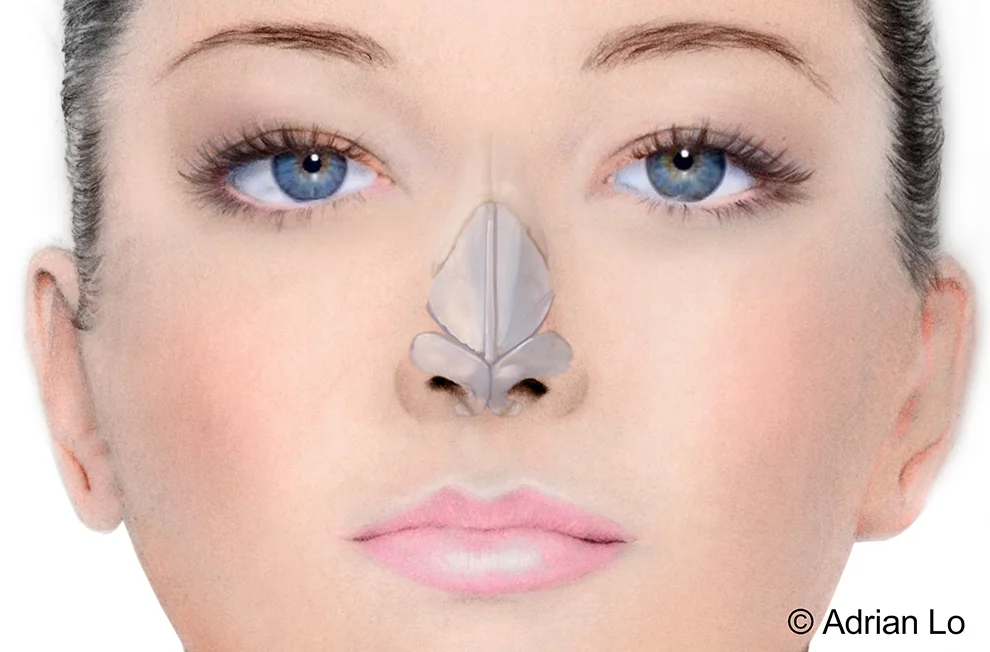
Septoplasty is a surgical procedure specifically aimed at correcting a deviated septum. The septum is the wall of bone and cartilage that divides the nasal cavity in half. When this structure is crooked or off-center, it can cause breathing difficulties and other symptoms like frequent nosebleeds or sinus infections.
During a septoplasty, the plastic surgeon straightens and repositions the septum to improve airflow through the nose. This procedure is often performed in conjunction with rhinoplasty, especially when functional issues are a primary concern alongside aesthetic goals.
Unlike rhinoplasty, which can involve changing the external appearance of the nose, septoplasty primarily focuses on internal structures. However, correcting a severely deviated septum can sometimes result in subtle changes to the nose’s external appearance.
Septoplasty can significantly improve the quality of life for patients who struggle with chronic nasal obstruction. It’s important to note that while septoplasty can be performed as a standalone procedure, combining it with rhinoplasty (a procedure sometimes called septorhinoplasty) can address both functional and aesthetic concerns in a single surgery.
Tip Rhinoplasty
Tip rhinoplasty, also known as tip plasty, is a specialized form of rhinoplasty that focuses solely on reshaping the nasal tip. This procedure can address a wide range of concerns, including a bulbous tip, a drooping tip, or asymmetry in the nasal tip.
During tip rhinoplasty, the plastic surgeon manipulates the cartilage in the lower third of the nose to achieve the desired shape and projection. This can involve removing excess cartilage, adding grafts to provide more structure, or reshaping existing cartilage.
The advantage of tip rhinoplasty is that it’s generally less invasive than full rhinoplasty. This often means a shorter recovery time and less postoperative swelling. It can be an excellent option for patients who are satisfied with the appearance of their nasal bridge but desire refinement of their nasal tip.
It’s important to note that changes to the nasal tip can have a significant impact on the overall appearance of the nose.
*Note: You might be asking “how much is a non-surgical rhinoplasty?” This is considered a “liquid nose job” or a 15-minute nose job. On average, you can expect to pay between $600 and $1,500 in the US.
How Much is a Rhinoplasty?
As mentioned, the cost of rhinoplasty is in the upper thousands, ranging around $10,000, generally between $8,800 and $10,400.
It’s crucial to remember that the cheapest option isn’t always the best when it comes to rhinoplasty. The skill and experience of your plastic surgeon play a significant role in achieving results that meet your goals while minimizing the risk of complications.
Did you know? Dr. Lo was rated one of the best rhinoplasty surgeons by Newsweek and Statista based on America’s Best Specialists & Surgeons of 2024!
When considering the cost, it’s also important to factor in potential additional expenses. These might include time off work for recovery, travel costs if you’re seeing a plastic surgeon outside your local area, and the possibility of revision surgery if the initial results don’t meet your expectations.
Many practices offer a detailed cost breakdown during the initial consultation. This transparency allows patients to understand exactly what they’re paying for and can help in making an informed decision. Some plastic surgeons may also offer package deals that include all associated costs, from pre-operative appointments to post-operative care.
It’s worth noting that most health insurance plans do not cover cosmetic rhinoplasty. However, if the procedure is being performed to correct a functional issue, such as a deviated septum, insurance may cover a portion of the costs. Always check with your insurance provider to understand your coverage.
Understanding the Rhinoplasty Process
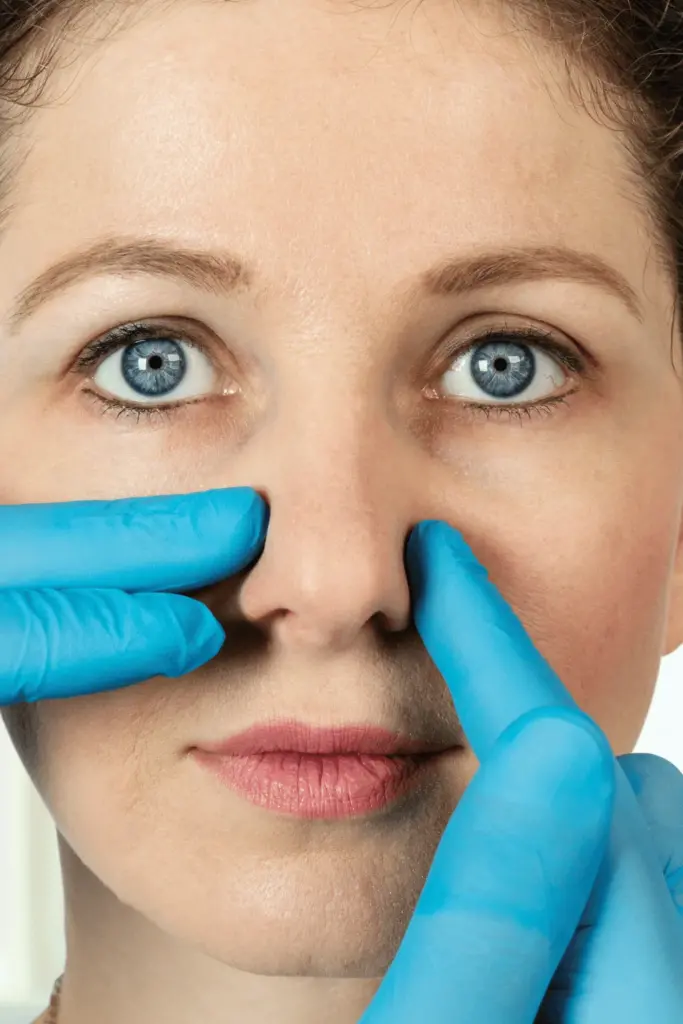
Initial Consultation
The rhinoplasty process begins with an initial consultation, the first step in your journey towards a new nose. During this meeting, you’ll have the opportunity to discuss your goals, concerns, and expectations with your plastic surgeon.
Our team will conduct a thorough examination of your nose, assessing both its external appearance and internal structures. We will take photographs from various angles for reference and use computer imaging software to give you a visual idea of potential outcomes.
Pre-operative Preparations
Once you’ve decided to proceed with rhinoplasty, your plastic surgeon will provide you with detailed pre-operative instructions. Following these guidelines carefully is important for ensuring a smooth surgery and recovery.
Typically, you’ll be asked to:
- Stop smoking at least two weeks before surgery, as smoking can interfere with healing and increase the risk of complications.
- Avoid certain medications and supplements that can increase bleeding, such as aspirin, ibuprofen, and vitamin E, for at least two weeks before surgery.
- Arrange for someone to drive you home after the procedure and stay with you for at least the first night.
- Prepare your recovery area at home with essentials like ice packs, gauze, and any prescribed medications.
- Fast for a specified period before surgery, usually starting the night before.
Your plastic surgeon may also recommend that you take certain vitamins or supplements to promote healing. Some patients find it helpful to prepare meals in advance or arrange for help with daily tasks during the initial recovery period.
The Surgery Day
Rhinoplasty is usually performed under general anesthesia, meaning you’ll be completely asleep during the procedure. Once you’re under anesthesia, the plastic surgeon will begin the operation, which typically takes between 1 to 3 hours, depending on the complexity of the case.
If you’re having an open rhinoplasty, the plastic surgeon will make a small incision on the columella (the tissue between your nostrils) with internal incisions in each nostril and carefully lift the skin to access the underlying structures. For a closed rhinoplasty, all incisions are made inside the nose.
The plastic surgeon will then reshape the bone and cartilage according to the surgical plan. This may involve removing excess tissue, adding grafts, or repositioning existing structures. Once the desired shape is achieved, the incisions are closed with sutures, and a splint is placed on the outside of the nose to help maintain its new shape during initial healing.
After the surgery, you’ll be moved to a recovery area where medical staff will monitor you as you wake up from anesthesia. The majority of rhinoplasty procedures are outpatient, meaning you’ll be able to go home the same day, but you’ll need someone to drive you.
Recovery and Aftercare
The recovery process after rhinoplasty is essential for achieving optimal results. While everyone’s healing journey is unique, there are some general guidelines and milestones to expect.
Immediately after surgery, you’ll have a splint on your nose and possibly some internal packing. You may experience some discomfort, swelling, and bruising, particularly around your eyes. Your plastic surgeon may prescribe pain medication to manage any discomfort. Elevation and icing for the first week is important. Avoiding trauma to your nose for several weeks after surgery is important. Your plastic surgeon will go over specific instructions to optimize your healing and your final result.
As you continue to heal, you will begin to see results 1 month after surgery but you may not see your final result until 6 months to 1 year after surgery.
Call Dr. Adrian Lo to Get Started with Your Rhinoplasty Today!
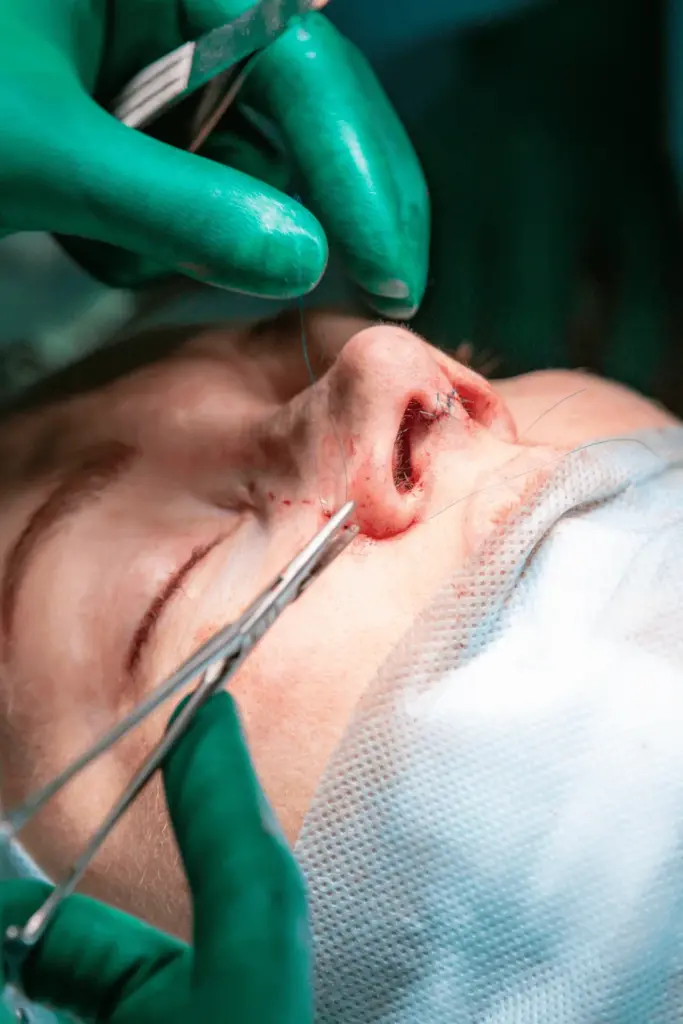
Taking the first step towards rhinoplasty can be both exciting and nerve-wracking. Dr. Adrian Lo and his experienced team are here to guide you through every stage of the process. With years of expertise in performing successful rhinoplasties, Dr. Lo is committed to helping you achieve the results you desire while prioritizing your safety and well-being.
Call our office today to schedule a consultation and learn more about our flexible financing options. Let us help you start your journey towards a nose that enhances your natural beauty and boosts your confidence.
